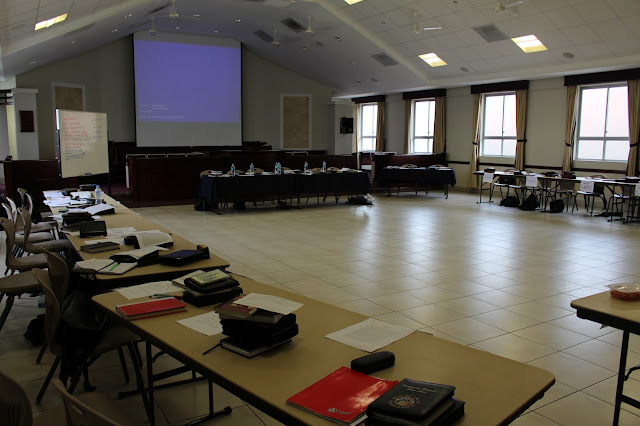We have over 218 missionaries in our mission. That's a lot of missionaries to interview!
The missionaries are divided into Zones; interviews are scheduled one zone at a time. Those in the zone arrive at the church where the interviews are scheduled and wait while the interviews are being conducted. While everyone waits the Assistants meet with the missionary companionships to review their records with them. The other missionaries use the time to study.
The outgoing President set up our calendar for our first month here (which was so kind!), and scheduled 9 days of interviews for the 12 zones in our mission.
While Boyd conducted the interviews, and the Assistants worked with the Zone Leaders, I distracted the missionaries from their studies to get help with my Spanish!
My purpose was two-fold: 1) It helps me get to know the missionaries on a more personal level, and 2) It helps to emphasize the importance learning a second language. For the Gringo missionaries to learn to speak Spanish WELL, and for the Latino missionaries to learn English while they have a FREE tutor 24/7 (our mission is split nearly 50% between latinos and gringos). Many of our missionaries are taking advantage of this rare opportunity, and we are grateful for their hard work. We are strongly convinced of the advantages of knowing more than one language!
And - because missionaries are missionaries - I learned such useful words for missionary work as:
- avestruz (ostrich)
- ornitorinco (platypus)
- otorrinolaringologo (ENT Dr)
I also learned words like:
- desarrollar (to develop - but shared because they knew it would be hard for me to pronounce)
- googlear (to google)
- descorazonador (disheartening - a common feeling for missionaries, I think)
- juego perdido (game over)
- bamba (knock off)
We had lively discussions sometimes about the difference between limes and lemons, what exactly is a leek (in English OR Spanish), and the proper use of "permiso," "perdón," or "disculpe."
It was great fun.
I tried to capture pictures of each companionship. I missed a couple of zones, though. :-(
But here are some from just one zone!
Oh! How we love these missionaries!

































